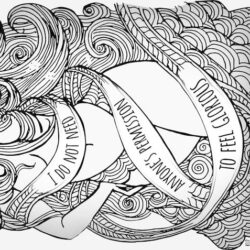Brown Sugar
Brown sugar is white sugar with some molasses remaining in it or added back after processing. (Sugar has had all of its molasses removed through the refining process.) Yep, it’s that simple!
And the difference between light and dark brown sugar? The amount of molasses in them. Molasses is also what makes brown sugar soft and moist. Turbinado or Unrefined sugar and evaporated cane juice are essentially less processed versions of brown sugar.
Pros: Because of the molasses, brown sugar offers more nutrients than white, like small amounts of calcium, potassium, and magnesium.
Cons:T he nutrients brown sugar contains aren’t enough to write home about. One ounce contains 0.2 mg of iron, whereas the RDA of iron for the average person is at least 8 mg per day. And it has almost all the negatives associated with white sugar.
Barley Malt
Barley malt is an unrefined sweetener that’s made from sprouted barley. It contains 65% maltose (essentially a form of glucose), 30% complex carbohydrates, and 3% protein.
Pros: Barley malt isn’t as sweet as many other sweeteners. Because it has some complex carbohydrates and a bit of protein, it is milder in its impact.
Cons: Since it’s high in maltose, barley malt can contribute to rapid blood sugar spikes. Also, barley contains gluten. This makes barley malt inappropriate for people with celiac disease or gluten sensitivity.
Maple Syrup
Best known as a pancake topper, maple syrup is a thick, dark sweetener made by boiling down maple tree sap. Note: we’re talking about pure maple syrup, not corn syrup imitations, often labelled ‘Maple Flavour’ syrup.
Pros: Maple syrup contains over 20 antioxidants and some good nutrients, including zinc, manganese, calcium, and potassium. A handful of studies have suggested potential breast and colon cancer-fighting properties in maple syrup polyphenols. Maple syrup also has a slightly lower GI score than sugar. Maple trees can produce sap for over 100 years if tended to well, making them pretty sustainable.
Cons: Maple syrup is still high in sugar, made up of ⅔ sucrose and supplying 50 grams of sugar in just ¼ cup.
Coconut Sugar
Not surprisingly, coconut sugar comes from the coconut palm tree. Also known as palm sugar, it looks similar to brown sugar, though it feels a little bit drier and has smaller granules.
Pros: Coconut sugar contains a fibre called inulin, which may help stabilize blood sugar. Palm trees don’t need to be cut down to produce this sugar, and they can produce sap for 20 years without using a lot of natural resources.
Cons: Coconut sugar still contains a lot of sugar. Its profile consists of around 70- 80% sucrose.
Honey
Honey is a fascinating substance, made by hard-working honeybees. The bees make honey from the nectar they get as they fly from flower to flower. Food companies use honey to sweeten and flavour many packaged foods. And it’s also popular for home use in things like tea or baking.
Pros: Honey contains flavonoid antioxidants. It also offers vitamin C, B vitamins, amino acids, and minerals. Some people believe locally-sourced raw honey can alleviate certain allergy symptoms, though the research is mixed. Honey also has antimicrobial properties.
Cons: Honey is still high in sugar content. And its antioxidant and nutritional values depend on the type of flowers the bees used as their nectar source. There are also debated ethical concerns around eating honey, especially when it comes from industrialized bee farms. For instance, concerns around what farmers feed them, the treatment of the Queen, and the role of these farms in colony collapse disorder.
Children under one year old should not eat honey due to its potential for harbouring bacteria that cause botulism. Finding purely organic, mass-produced honey is near impossible. But many small-scale local beekeepers contribute to pollination and a healthier ecosystem.

